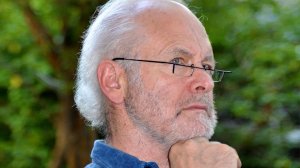When Mandela was captured in 1962 the police did not know that he had been overseas for military training and that he was Commander in Chief of the recently formed Umkhonto we Sizwe, Spear of the nation, (MK). It was only later, when Rivonia was raided that they came across documents that pointed to Mandela’s wider role. When Mandela appeared in court in 1962, he was defiant. As he entered he wore the attire of abaThembu, thus asserting that he was not only a lawyer, an African, a believer in a South Africa that belonged to all who live in it, but also a Thembu.
Bearing relevance to the present, he was asserting that these identities can coexist and that it is not backward or primitive to continue to identify oneself as a Thembu, and understanding such an identity to exist in a dynamic relationship to the broader freedoms and identities of others.
Mandela immediately took charge of the courtroom, asking the magistrate to allow him to make a request that went beyond the charges he faced. It was in itself presumptuous for an accused to make a demand to bypass the charges that were before the court. In law, no accused can do that. But more was to come, for the first time in South African history a person demanded not only recusal of the magistrate but did so because he, as a ‘black man in a white man’s court’ did not recognise the laws under which he was tried.
These were laws made by whites and they were made to oppress black people. Mandela argued that the entire court room was suffused with the imagery of whiteness, white power –white police, white magistrate, white prosecutor, white court orderlies and this was the character of the justice system as a whole. He believed he could not secure justice in that situation.
His plea was refused and Mandela proceeded to conduct his own defence, which amounted to a political statement, putting the government on trial for creating the situation where black people were forced to resist in order to regain their human dignity. Found guilty, Mandela presented a ‘plea in mitigation of sentence’, that constituted a defence of his actions, depicted as part of the centuries long resistance to conquest. On that occasion Mandela was sentenced to 5 years.
He was hauled back, from Robben Island, to face charges in the Rivonia trial of 1964. The accused were charged with a general conspiracy to overthrow the state. Their demeanour was defiant. When asked to plea they responded, ‘not guilty, the government should be in the dock.’
A close reading of Mandela’s statement from the dock reveal a man who traced the process leading to his trial back to the young boy, the stick fighter of his youth, who listened to stories of brave warriors resisting conquest. He explains systematically what led him (and his comrades) to be on trial.
Mandela speaks of the choices he made. Having undergone considerable development in his understanding, the Mandela who stands trial is a man who sees his life inextricably tied to the plight of all the peoples of South Africa, black and white. He respects their common humanity and there can be no half-measures in the struggle for their freedom.
When Mandela made this statement the death penalty was a real possibility facing the accused. Mandela came from a very different generation from those who entered the ANC after 1990 when danger had passed, to a large extent and quite different prospects could open up if one entered leadership.
Mandela makes it clear that willingness to sacrifice meant being prepared. One could not say one is ready to die without visualising what it entails to carry out such an undertaking. In this respect Mandela bears comparison with Mahatma Gandhi and Chief Albert Luthuli who also prepared themselves for the possibility of death, placing a lot of weight on vows and other undertakings to face whatever the future might hold. To be ready to carry out one’s undertakings in extreme situations entails more than political understanding or belief in a cause. It also means unifying one’s thinking and one’s psychological or spiritual willingness to make this integral to one’s life and possible death.
Amongst the legacies of Mandela is this ethical core, this sense that acting on beliefs was not merely enunciation of ideas, but preparation for and willingness to endure hardships of an extreme kind. It is possible that some who read this will say that is for Mandela not for us ordinary mortals. But all of us, in our everyday lives confront difficult decisions and we have to decide whether or not we act in accordance with the beliefs we claim to cherish. It is this unifying of thinking and acting that we need to try to incorporate into our personal and political life.
Raymond Suttner worked with Nelson Mandela when he was first released from prison. Suttner was a leader in the ANC, SACP and UDF. Currently he is a professor attached to Rhodes University and UNISA.
EMAIL THIS ARTICLE SAVE THIS ARTICLE
To subscribe email subscriptions@creamermedia.co.za or click here
To advertise email advertising@creamermedia.co.za or click here











